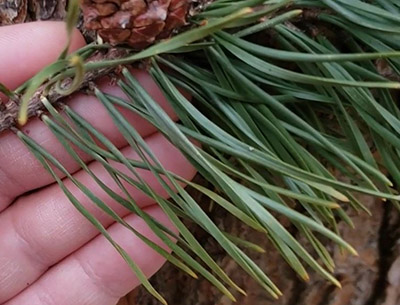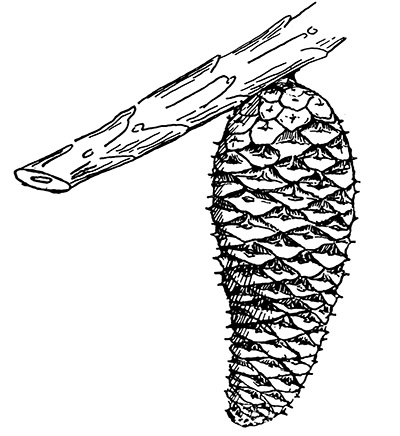Intro to Trees of Indiana: Virginia Pine
The classic and trusted book "Fifty Common Trees of Indiana" by T.E. Shaw was published in 1956 as a user-friendly guide to local species. Nearly 70 years later, the publication has been updated through a joint effort by the Purdue Department of Forestry and Natural Resources, Indiana 4-H, and the Indiana Department of Natural Resources, and reintroduced as "An Introduction to Trees of Indiana."
A printed copy of the full publication is available for purchase for $7 in the Purdue Extension Education Store. The field guide helps identify common Indiana woodlot trees.
Each week, the Intro to Trees of Indiana web series will offer a sneak peek at one species from the book, paired with an ID That Tree video from Purdue Extension forester Lenny Farlee to help visualize each species as it stands in the woods. Threats to species health as well as also insight into the wood provided by the species, will be provided through additional resources as well as the Hardwoods of the Central Midwest exhibit of the Purdue Arboretum, if available.
paired with an ID That Tree video from Purdue Extension forester Lenny Farlee to help visualize each species as it stands in the woods. Threats to species health as well as also insight into the wood provided by the species, will be provided through additional resources as well as the Hardwoods of the Central Midwest exhibit of the Purdue Arboretum, if available.
This week, we meet the Virginia pine, or Pinus virginiana. In Indiana, this species is native to the southern part of the state, namely Clark and Floyd counties in the dry, hilly areas known as the Knobs near the Ohio River, but it has been widely planted across the state.
This native conifer has clusters of two needles, approximately two inches long, which are often twisted.
The Virginia pine has an open canopy. Bark on the Virginia pine is flaky, with a combination of gray and red-orange tones. The bark gets more orange higher up the trunk. Cones are one to three inches long and have very sharp thorns at the end of the scales. Cones typically stay on the tree for several years.
Virginia pine, which grows to between 50 and 75 feet tall, prefers clay, loam or sandy loamy soils, but it is adapted to a variety of mined soils as well as acidic and drought-plagued sites. The native range of Virginia pine extends from southern New Jersey west to Pennsylvania and southern Ohio, south to South Carolina, northern Georgia, northern Alabama and northern Mississippi.
Virginia pine is often used for reforestation and erosion control.
According to the U.S. Forest Service, this species has high value as food for white-tail deer and many small mammals and birds, and also provides wildlife cover and habitat for rabbits, northern bobwhite and many non-game birds. It is also becoming more important as a pulpwood species, especially through the reforestation of abandoned agricultural lands, cutover and mined sites.
The Wood Database notes that Virginia pine has a 12 percent moisture content and weighs in at 32 pounds per cubic foot. This species is rated well for use with most tools, however the resin can gum up tools and clog sandpaper. This species glues and finishes well. Virginia pine can be used for heavy construction such as mine props and railroad ties as well as beams and poles for bridges, etc. It is also used to make plywood, wood pulp and veneers. Historically Virginia pine also was used for rough lumber, fuel, tar and charcoal.
Other Resources:
ID That Tree: Virginia Pine
Borers of Pines and Other Needle Bearing Evergreens in Landscapes, The Education Store
America’s Least Wanted Wood-Borers, Japanese Pine Sawyer, The Education Store
Purdue Arboretum Explorer
The Woody Plant Seed Manual, U.S. Forest Service
Purdue Plant Doctor
Native Trees of the Midwest, The Education Store
Shrubs and Woody Vines of Indiana and the Midwest, The Education Store
Investing in Indiana Woodlands, The Education Store
Forest Improvement Handbook, The Education Store
ID That Tree, Purdue Extension-Forestry & Natural Resources (FNR) YouTube playlist
Woodland Management Moment , Purdue Extension-FNR YouTube playlist





